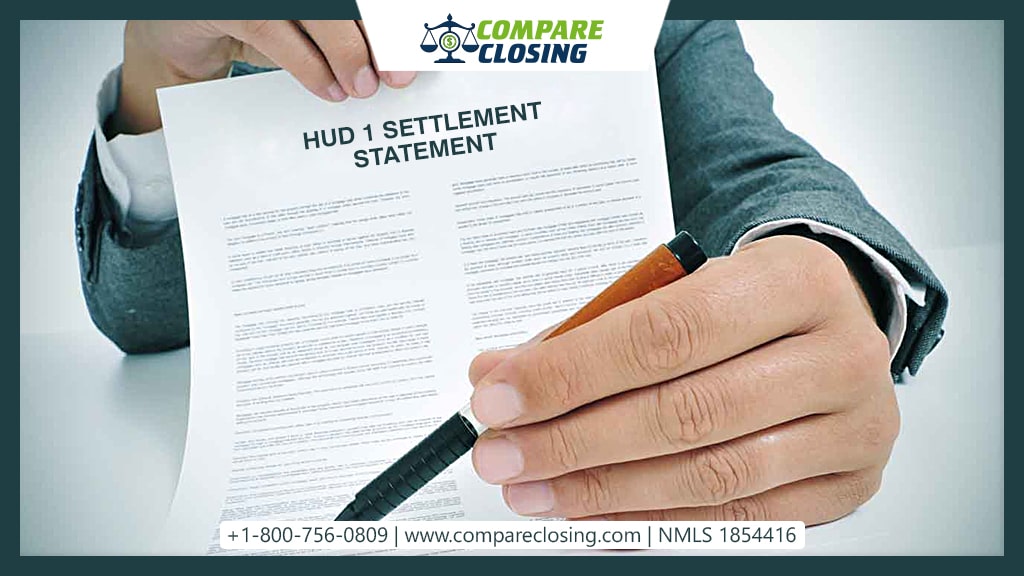Table of Contents
- What Are Netting Escrows & How Does It Work?: The Best Guide - January 2, 2024
- The Secret About Prescriptive Easement: Top Guide 1 Must Know - December 4, 2023
- About Home Equity Loans In Texas And How Can One Obtain It - November 27, 2023
About HUD 1 Settlement Statement
When you take a mortgage or refinance your current mortgage there are many documents that you sign at the time of closing.
One of such documents that you might have received if you have applied for a mortgage loan on or before 3rd October 2015, you might have signed a document called as HUD 1 settlement statement.
In this post, we will understand what is HUD 1 settlement statement in detail.
What Is HUD Settlement Statement?
The HUD Settlement Statement is a document that shows all buyer and seller fees and credits in a real estate transaction or all fees that are charged by the lender for refinancing a mortgage.
The HUD statement was discontinued in October 2015 and has been replaced with a closing disclosure.
Though HUD-1 was discontinued for all other mortgage loans you will receive one if you are applying for a reverse mortgage.
On or before 3rd October 2015, the Real Estate Settlement Procedures Act (RESPA) of 1975 had a requirement from the lender to have a HUD-1 statement as a standard form in every real estate transaction across the country that included a mortgage loan.
In the case of a mortgage refinance the HUD-1A was used as a settlement statement at the time of closing.
Though the HUD settlement statement is only used in the case of reverse mortgages, in some situations the lender or bank may ask for this statement as proof of the sale of the property that took place before October 2015.
What Is Included In A HUD Settlement Statement?
As unusual as it may sound, the HUD statement was supposed to be analyzed reverse side first. The back side of the statement had two columns: the column on the left displayed the borrower’s costs and the column on the right displayed the seller’s costs.
The borrower list includes costs associated with the mortgage, such as a loan underwriting fee, points, credit report fees, property appraisal fees, flood certification fees, and other charges.
As the lenders also have to collect some items in advance, the statement will also display any homeowner’s insurance costs, prepaid interest charges, property taxes, closing agent fees, and title insurance charges.
The detailed list for the sellers could show the commission paid to the real estate agent, any seller’s credit that was agreed to by the buyer, and information on mortgage pay-off. The total costs of the seller are generally lower than the costs of the buyer.
The numbers on the back page of the HUD settlement statement are added together and the totals are moved to the front of the form.
The cash amount to be paid by the borrower and the amount to be paid to the seller appear at the bottom of the first page.
HUD Settlement Statement Vs. Closing Disclosure.
Before October 2015, different federal agencies required different documents from the borrower. This can be confusing for the borrower as the information in the documents can be inconsistent.
Hence, the Dodd-Frank Wall Street Reform and Consumer Protection replaced it with Closing Disclosure which merged all these different forms into one document to avoid any confusion and inconsistencies.
According to federal law, the lender is required to provide the closing disclosure three days before your closing date.
However, the HUD settlement statement had a different time frame which was as close as the closing date.
The HUD settlement statement was a four-page long form including a page for signatures.
However, the Closing Disclosure is a five-page long document because multiple documents were merged to form the Closing Disclosure.
Conclusion
Back then the HUD 1 settlement statement played a very significant role in real estate transactions.
If you were to receive the HUD statement, it was always suggested to get it checked by a professional real estate attorney to avoid any mistakes that could end up in your transaction making it more costly.
Amanda Byford
Amanda Byford has bought and sold many houses in the past fifteen years and is actively managing an income property portfolio consisting of multi-family properties. During the buying and selling of these properties, she has gone through several different mortgage loan transactions. This experience and knowledge have helped her develop an avenue to guide consumers to their best available option by comparing lenders through the Compare Closing business.





